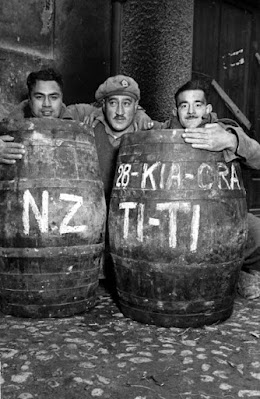The 28th Battalion, more commonly known as the Māori
Battalion (Te Hokowhitu a Tū), was an infantry battalion of the New Zealand
Army that served during WWII.

It formed following pressure on the Labour government from some Māori Members of Parliament and Māori organisations throughout the country which wanted to see a full Māori unit raised for service overseas. The Māori Battalion followed in the footsteps of the Māori Pioneer Battalion that had served (1915–1919) during the First World War (1914–1918) with success.
 |
| Joseph Takuta |

Raised in 1940 as part of the Second New Zealand Expeditionary Force (2NZEF), the 28th (Māori) Battalion was attached to the 2nd New Zealand Division as an extra battalion that moved between the division's three infantry brigades.

The battalion fought during the Greek, North African and Italian campaigns, earning a formidable reputation as a fighting force which both Allied and German commanders have acknowledged. It became the most-decorated New Zealand battalion during the war.
 |
| Joseph-Vailima-Tauaika-Meanata |
Following the end of hostilities, the battalion contributed a contingent of personnel to serve in Japan as part of the British Commonwealth Occupation Force before being disbanded in January 1946.





No comments:
Post a Comment